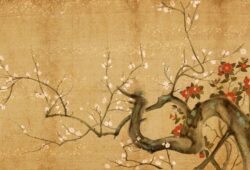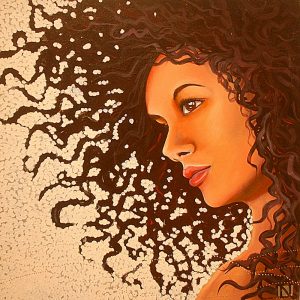Henri Rousseau: The Enigmatic Beauty of Naïve Art
 Posted On
Posted On
Henri Rousseau, a self-taught French painter, is renowned for his distinctive style and imaginative landscapes that evoke a sense of wonder and mystery. Born in 1844 in Laval, France, Rousseau’s journey to becoming an artist was unconventional. He held a day job as a toll collector for most of his life, only pursuing painting as a hobby until later in life when his work gained recognition.
Rousseau’s paintings are characterized by their dreamlike quality, vivid colours, and intricate detail. His most famous works often depict lush jungles, exotic flora, and wild animals, despite the fact that he had never travelled outside France. The artist’s inspiration stemmed from botanical gardens, illustrated books, and visits to the Parisian Zoo, which fuelled his imagination to create lush, untamed landscapes.
One of Rousseau’s iconic pieces is “The Dream” (1910), which portrays a reclining nude woman amidst a jungle setting. The contrast between the serene figure and the vibrant, untamed nature surrounding her captures the essence of Rousseau’s style. His use of bold, unreal colours and flattened perspectives contributes to the dreamy, almost surreal atmosphere of the painting.
Another masterpiece, “The Sleeping Gypsy” (1897), features a sleeping woman lying peacefully next to a lion in a moonlit desert. The enigmatic scene, illuminated by a starry sky, embodies Rousseau’s fascination with exoticism and his ability to create a sense of both danger and tranquillity in his compositions.
Rousseau’s technique, often described as naïve or primitive, is characterized by its simplicity and childlike quality. His lack of formal training led to unconventional methods, such as using multiple layers of paint and emphasizing outlines over shading. These choices contributed to the unique charm of his paintings, making them instantly recognizable.
Despite initial ridicule from the art establishment, Rousseau’s work eventually garnered admiration from avant-garde artists like Pablo Picasso and the Surrealists, who found inspiration in his unconventional approach. They admired his ability to evoke emotions and transport viewers into fantastical realms through his art.
Rousseau’s legacy extends beyond his artistic achievements. His boldness in defying traditional artistic norms paved the way for new artistic movements and encouraged artists to explore unconventional styles and subjects. His influence on modern art continues to be felt, with his work celebrated in major art museums worldwide.
Henri Rousseau’s paintings continue to captivate audiences, inviting them to immerse themselves in his whimsical worlds. His ability to infuse ordinary scenes with a touch of magic and mystery remains a testament to his enduring legacy as a visionary artist. Rousseau’s art reminds us to embrace imagination and to find beauty in the unconventional—a legacy that continues to inspire generations of artists and art enthusiasts alike.



